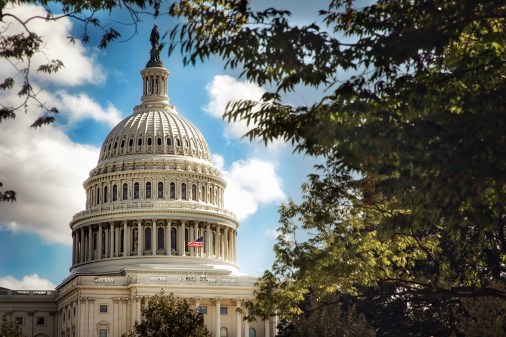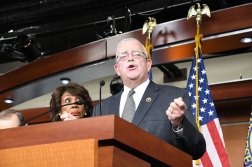FITARA 14.0 scorecard will feature a revised methodology

The House Oversight and Reform Subcommittee on Government Operations plans to revise the methodology behind FITARA grading, after 13 agencies’ overall grades remained the same on the 13th biannual scorecard released Thursday.
Of those agencies, 12 also received the same grades on the FITARA 12.0 scorecard in July, and only two agencies achieved an overall A grade.
The scorecard was created six years ago to incentivize agencies to improve their IT, not hand out gold stars, but grades have stagnated due to a combination of factors like limited data availability and the tight six-month turnaround, said Rep. Gerry Connolly, D-Va., while chairing the subcommittee’s FITARA hearing Thursday.
“That’s not progress,” Connolly said. “Agencies appear less motivated to improve grades, perhaps because of the methodology used to calculate some of the metrics.”
For instance, the transparency and risk management and portfolio review savings components of the scorecard are graded on a curve, which makes it hard for agencies to move up in their peer groups, said Ann Dunkin, chief information officer at the Department of Energy, during her testimony.
The Data Center Optimization Initiative (DCOI) component will be retired now that all agencies received an A grade, and seven have no plans for future center closures.
“Consolidation has slowed because we’ve squeezed as much juice as we can from this initiative,” said Carol Harris, director of IT and cybersecurity at the Government Accountability Office, during her testimony. “In contrast, the vast majority of agencies are not moving fast enough in their transition off of GSA’s expiring telecommunications contracts.”
A total of 15 agencies received Fs on the transition off Networx component of the scorecard. That includes the General Services Administration, which is overseeing agencies’ transitions to the $50 billion Enterprise Infrastructure Solutions (EIS) contract for network and infrastructure modernization.
FITARA 13.0 raised the bar to 90% transitioned from 50% transitioned in July because GSA expects all agencies to hit that mark by March 31 and be 100% transitioned by Sept. 30, after which the Networx contract expires on May 31, 2023.
Governmentwide transition to the Networx contract came three years late and cost agencies $329 million in savings. Should agencies fail to meet GSA’s deadline, it will be forced to offer a bridge contract extending EIS’s predecessors.
Panelists at Thursday’s hearing suggested a number of new components for future iterations of the FITARA scorecard, chief of which was an expanded cyber component that better reflects the current threat environment and gauges how agencies are addressing global supply chain risks and implementing the Cybersecurity Executive Order issued in 2021.
Harris suggested a component evaluating how agencies are replacing legacy IT systems, while former federal CIO Suzette Kent said she wanted the existing IT modernization component broadened to encompass procurement innovation. Kent also wanted a digital component examining agencies’ migration to platforms like mobile that deliver quality customer experiences in line with the Customer Experience (CX) Executive Order issued in 2021.
Multiple panelists proposed further including a workforce component grading agencies’ skills development and employee performance.
A new grading methodology would likely see agencies score lower at first. A total of seven agencies improved their FITARA grades on the latest scorecard, with the National Science Foundation receiving the only A+ and the U.S. Agency for International Development receiving the only A. GSA’s A+ on the previous scorecard dropped to a B+.
At the same time, the Technology Modernization Fund Board’s focus on funding IT modernization, cyber and potentially CX projects the Biden administration is prioritizing could mean grades improve if such components are added to the scorecard.
Whatever the case, achieving agency consensus on new components that reflect where their IT efforts are headed could take two to three cycles — followed by a six-month review process.
“When you’ve accomplished your goal around one element, it doesn’t make sense to measure it anymore,” Joe Flynn, chief technology officer at software contractor Boomi, told FedScoop. “We should be moving on to the next most-important thing.”






